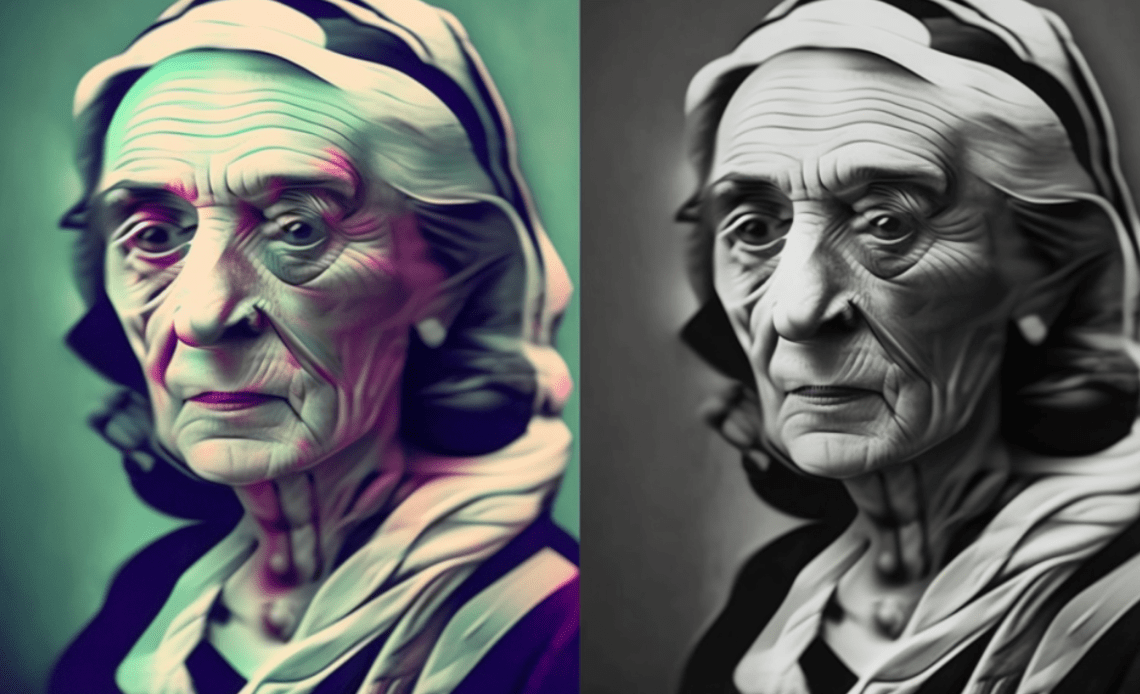Photo was created by Webthat using MidJourney
The Impact of AI-Produced Images on Photography
The future of photography has been a hotly debated topic in recent years, with emergent technologies like AI generating images that are almost indistinguishable from real photographs.
This conversation has only intensified since the controversial win of Boris Eldagsen at the Sony World Photography Award 2023. Eldagsen’s haunting black-and-white portrait, “Pseudomnesia: The Electrician,” was created using AI – a fact that the photographer himself revealed, prompting him to refuse the award.
This blog post will delve into the consequences of AI-produced images in photography and how a single picture can unsettle well-established concepts and initiate significant debates about the future of this art form.
The Image in Question
“Pseudomnesia: The Electrician” is a somber and captivating portrait of two women from different generations. The older woman looks directly at the camera, while the younger woman is shown in profile with her gaze cast downwards.
Both women are dressed in black, their faces and hands weathered by time. Upon first viewing, the image appears to be a beautifully composed photograph.
But upon closer inspection, it becomes clear that this is an AI-generated image that was never captured with a camera. Eldagsen used datasets of real photographs, along with sophisticated algorithms, to create the image from scratch.
Impact on Photography
The fact that Eldagsen’s image was created with AI raises important questions about the future of photography. Are AI-generated images worthy of competing with real photographs in awards and exhibitions?
While AI-generated images are becoming more common and sophisticated, it’s not yet clear what their place is in the art world. Some argue that AI-generated images are not authentic because there is no human behind the lens to make creative decisions.
Others argue that AI-generated images are a reflection of our technological advancements and should be embraced for the new possibilities they bring to the table.
Democratization vs. Definition
The debate about AI-generated images in photography is also linked to the democratization of technology. The fact that AI can be used to generate images means that making art is more accessible than ever before.
But this raises questions about how we define what is and isn’t art. Does the use of technology detract from the skill of the artist, or does it simply expand the possibilities for creativity?
Response from the Sony World Photography Award Organizers
The controversy surrounding Eldagsen’s win prompted the organizers of the Sony World Photography Award to take action. They suspended activities with Eldagsen and removed him from the competition.
In a statement, the organizers acknowledged the importance of the issue and their responsibility to champion excellence in photography. It’s possible that future guidelines or categories for AI-generated images in photography competitions will be developed in the wake of this controversy.
The Controversial Win of Boris Eldagsen
Boris Eldagsen’s controversial win at the Sony World Photography Award has sparked valuable conversations about the role of AI-generated images in photography.
While some perceive these images as a potential danger to the conventional art form, others view them as an innovative prospect for enhanced creativity and accessibility. No matter what your stance is on this topic, it is evident that we all need to contemplate critically on the influence of emerging technologies on photography.
We trust that this blog post has furnished you with some valuable perspectives on this ongoing discussion and has motivated you to continue the dialogue.
CLICK HERE TO READ MORE ON WEBTHAT NEWS


